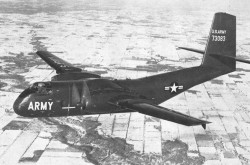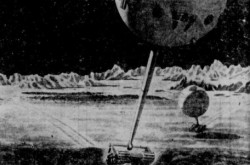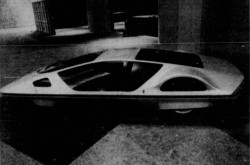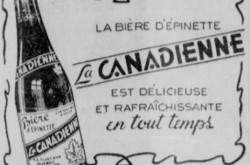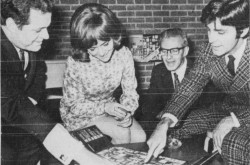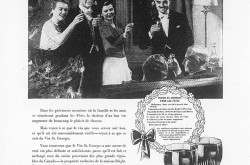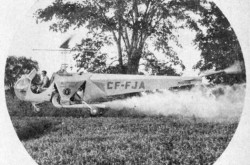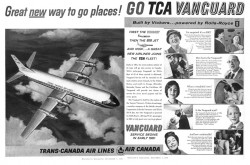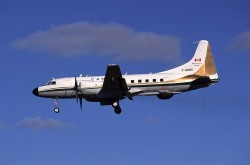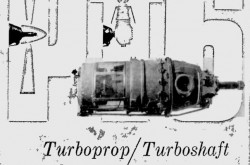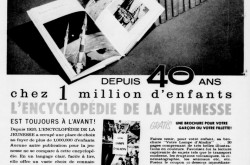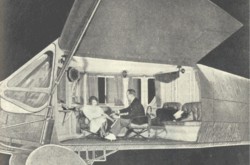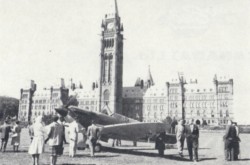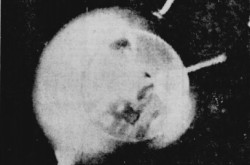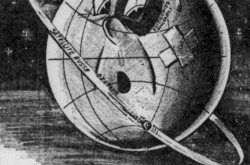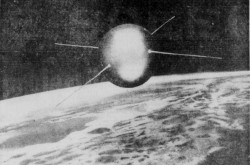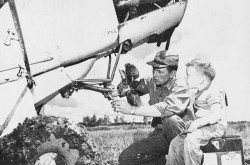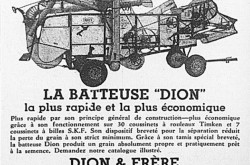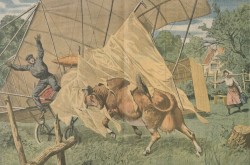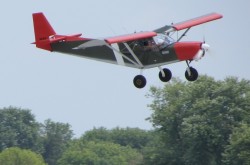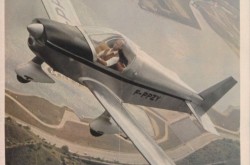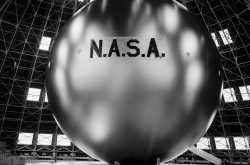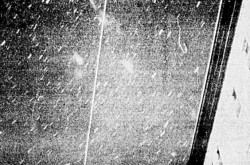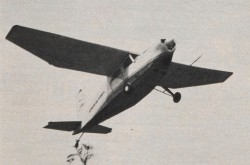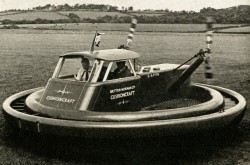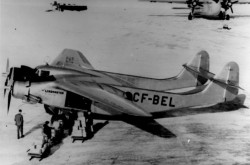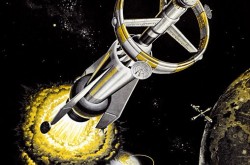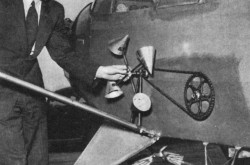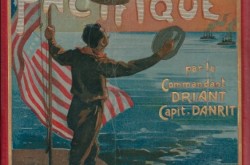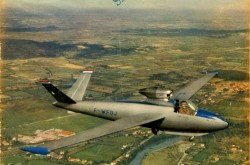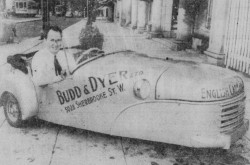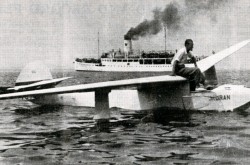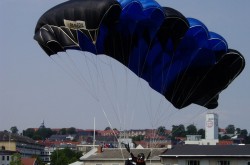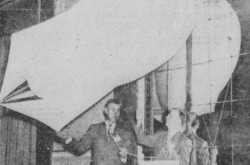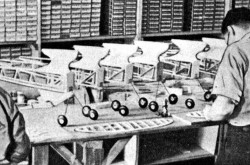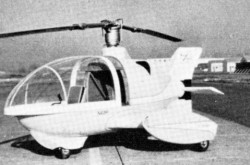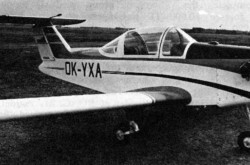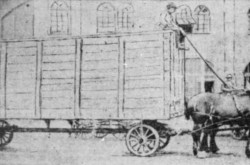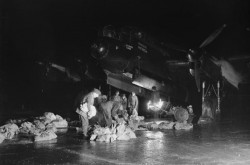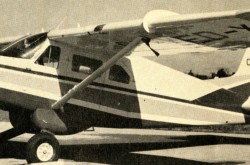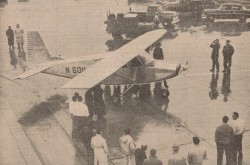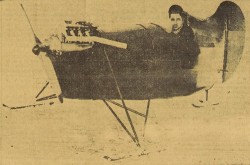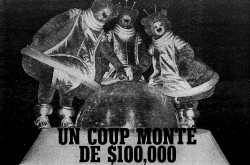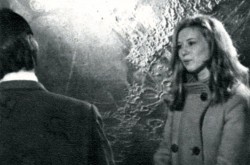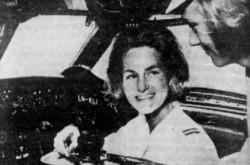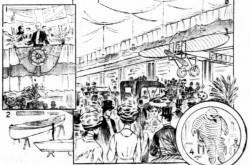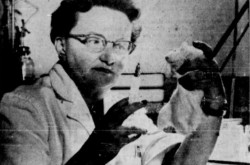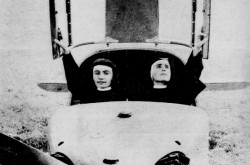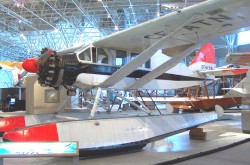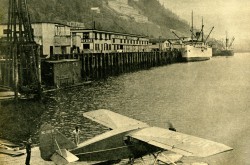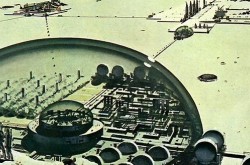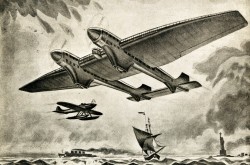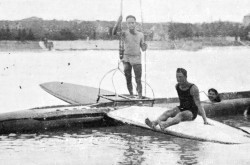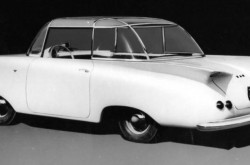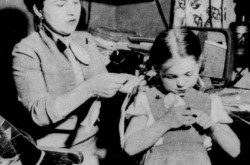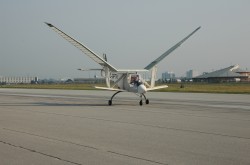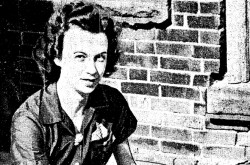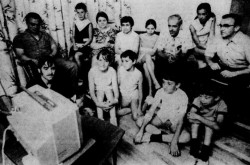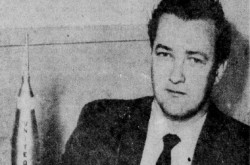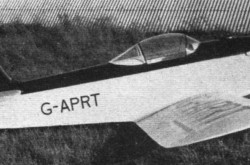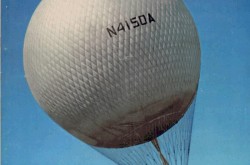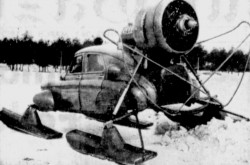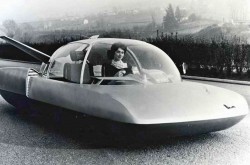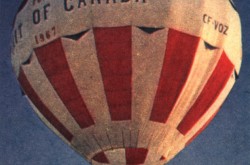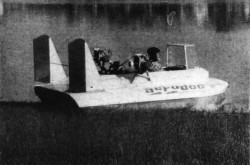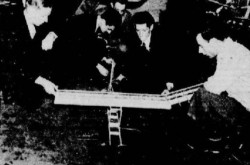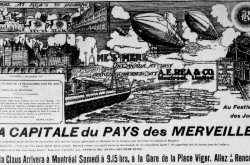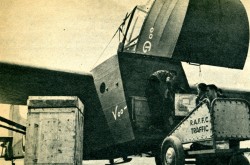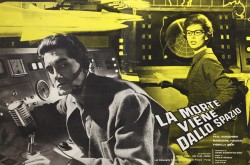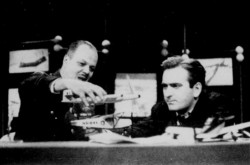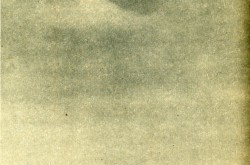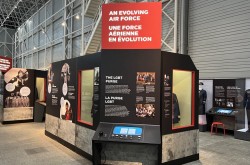This engine may have been a bit heavy but her smile still stayed on: The Williams Jet No. 1 and its successors

My dearly beloved reading friend, it is with ever renewed pleasure that I, yours truly, welcome you to the wonderful world of aviation and space – and whatever else happens to tickle my funny bone – in an intellectual manner of course.
This week’s topic should also tickle your funny bone. The caption of the photograph I came across while perusing the 18 January 1960 issue of the well-known American weekly magazine Aviation Leak and Space Mythology, sorry, Aviation Week and Space Technology, should whet your appetite:
Centrifugal flow turbojet engine weighing [11 kilogrammes] 23 lb. develops [32 kilogrammes] 70 lb. of thrust. The engine, developed by the Williams Research Corp., Walled Lake, Mich., is intended for helicopter rotortip jets and in multiple units for powering light aircraft. The jet employs a 4 to 1 compressor, an annular combustion chamber and a single-stage axial flow turbine operating at 59,000 rpm. Williams says that the mechanical problems of high-speed operation proved less troublesome than the achievement of high aerodynamic efficiency with the miniature components during the engine’s development.
By and large, the story of Williams Research Corporation is the story of a remarkable human being named Sam Barlow Williams. Born in the United States in May 1921, Williams was a smart kid who liked to tinker. Like a number of young people, he developed an interest in gas turbines while studying mechanical engineering during the Second World War.
After completing his bachelor’s degree at Purdue University, Williams joined the staff of the engineering division of an American automobile giant mentioned a few times in our blog / bulletin / thingee since January 2019, namely Chrysler Corporation. Although initially involved in metallurgy and piston engine development, his interest in gas turbines did not go unnoticed. In early 1944, the head of Chrysler’s engineering research section initiated work on a gas turbine, the A-86, which became a full-fledged research project in mid-year.
In late 1944, representatives of the Bureau of Aeronautics of the Unites States Navy (USN) asked Chrysler if it might be willing to turn this engine into a turboprop seemingly destined for a long range maritime patrol aircraft. The USN sent its requirements in May 1945 and followed suit with a letter of intent in June. Chrysler accepted the challenge. Concerned that the projected engine would not be powerful enough, the USN pretty much rewrote the contract in late 1945, to reflect its new requirements, in cooperation with Chrysler.
Williams was asked to join the corporation’s team at some point in 1944 or 1945. He played a significant role, and…
Did yours truly ever pontificate, sorry, talk (type?) about turboprops, my reading friend? I thought not. Why not remedy this failing on my part at this very instant?
To make a story short long, a jet engine is a type of gas turbine and, as such, a cousin of the steam turbines used to power ships, especially in earlier days of the 20th century, and to generate electricity. Unlike the piston engines used in automobiles or in light / private aircraft, a jet engine does not require pistons, valves or a crankshaft to produce power. Indeed, a jet engine produces power continuously as it rotates which makes it far more efficient than high power piston engines, since these produce power during only 1 of the 4 operations of their cycle.
How a jet engine actually works can be explained briefly. Air enters at the front through an air intake, or inlet, and is compressed by a rapidly rotating compressor, usually a multi-stage, fan-like compressor to be more precise. Warmed up in the process, this air enters one or more combustion chambers, or combustors, where fuel is injected and where the air-fuel mixture is burned. The superheated and expanding gases rush to the rear of the jet engine and escape into the atmosphere through a nozzle that maximises their speed. As the gases rush out, they drive a windmill-like turbine, usually a multi-stage one, connected to the compressor at the front, and push forward the aircraft on which the engine is mounted. One can express this entire cycle in a few words of wisdom: suck, squeeze, bang and blow.
As you undoubtedly realise by now, the jet engine is an application of Newton’s third law of physics, which states that for every action, there is an equal and opposite reaction.
The basic working principle of a basic jet engine, or turbojet, was tinkered with as time went by and variants soon made their appearance. Please note that the following description describes a typical engine configuration. It is quite possible that some engines work somewhat differently.
In the case of the turboprop, the turbine at the rear of the engine is connected not only to the compressor at the front but also to a set of gears, in other words a reduction gearbox, linked to a propeller. Most of the power developed by a turboprop is delivered to this propeller. This increases complexity but leads to a fuel consumption inferior to that of a turbojet. The limitations of a propeller, however, mean that like piston-powered aircraft, those fitted with turboprops find it very difficult to fly faster than 750 to 800 kilometres/hour (470 to 500 miles/hour). This being said (typed?), turboprops are much lighter than piston engines in the same power range. They are widely used in small- to medium-sized commuter airliners, utility aircraft and military transport planes.
Now, wasn’t that fun and illuminating, my reading friend? There will be a test at the end of this article, by the way.
The Chrysler T36 turboprop engine ran for the time, on a test bed, but without a propeller, in June 1947. It first turned a propeller in February 1948. The T36 performed quite well but had issues. It produced less power than expected but consumed more fuel than expected, for example. Said issues, allied with a reorientation of the USN’s priorities toward turbojet engines and a reorientation of Chrysler’s priorities toward automobile production, led to the abandonment of the T36 project, in July 1948. A (greatly?) improved and more powerful version of the engine was under development at the time, but was never tested.
Unwilling to throw away the expertise developed by his team, the engineer in charge convinced the management of Chrysler to develop a gas turbine that could be used on automobiles. A prototype of this engine ran for the first time, on a test bed, in 1953. Another example of this engine was mounted on a 1954 Plymouth sports coupe. Williams was one of the passengers of the automobile when it was first tested. The turbine automobile was first demonstrated in public in June 1954 when Chrysler’s new proving ground facility was inaugurated. Would you believe that this automobile represented the first attempt made by an American automobile manufacturer to mount a gas turbine in a production vehicle?
While it is true that another example of this gas turbine engine was mounted in a 1955 Plymouth, the important thing to note here, in our you know what, is the fact yet another example of this engine powered a 1956 Plymouth 4-door sedan used to make the first transcontinental journey made by an automobile powered by a gas turbine. The 4 860 kilometre (3 020 mile) journey between New York City, New York, and Los Angeles, California, in March 1956, took 4 days. The people on board were in no hurry, and did not want to get speeding tickets. The gas turbine gave no tribble at all, if I may paraphrase Montgomery “Scotty” Scott, a Star Trek character played by a Canadian actor by the name of James Montgomery “Jimmy” Doohan.
If I may be permitted the briefest digression, did you know that Doohan was an observation pilot during the Second World War? And yes, the famous television series Star Trek was mentioned in several issues of our blog / bulletin / thingee since August 2017.
Moving right along on the path to digression, Doohan starred in a significant television movie produced in 1956 by the Canadian national radio and television broadcaster Canadian Broadcasting Corporation. The scriptwriter of Flight into Danger was a British born Royal Air Force pilot of the Second World War who later immigrated to Canada. His name was Arthur Hailey. Very popular with the public and with critics, Flight into Danger gave birth to a 1957 American film, Zero Hour, whose hero was also a Canadian pilot who had lost confidence in himself.
The novel Flight into Danger / Runway Zero-Eight, published in 1958 and written by Hailey with 2 co-authors who used a common pen name, John Castle, was behind an American made for television movie produced in 1971, Terror in the Sky.
It should be noted that the airliner on which the action of the film Zero Hour and the novel Flight into Danger took place was Flight 714 to Vancouver. Interestingly, the 22nd and second to last album of the adventures of Tintin, a graphic novel hero known worldwide created by Belgian Georges Prosper Remi, known as Hergé, was entitled ... Vol 714 pour Sydney. Small world, isn’t it? This album appeared in French in 1968.
And yes, Hergé was mentioned in several issues of our blog / bulletin / thingee since August 2018.
The success of Hailey’s story did not stop there. In the United Kingdom, the British Broadcasting Corporation adapted the script of Flight into Danger for an episode of the television series Studio 4, which went on air in 1962. A West German state radio and television broadcaster, Süddeutscher Rundfunk, produced a television movie entitled Flug in Gefahr in 1964. In Czechoslovakia, the state radio broadcaster, Československý Rozhlas, broadcasted its own version, Let do nebezpečí, in 1981.
The success of Hailey’s story did not stop there either. The American film industry began to take an interest in so called disaster movies from the end of the 1960s. Released in theaters in 1970, Airport enjoyed great success. In fact, this feature film was so successful that it gave birth to one of the most famous series of disasters movies of the 20th century: Airport 1975 (1974), Airport ‘77 (1977) and The Concorde - Airport 79 / Airport ‘ 80: The Concorde (1979). The latter did not know a successor because it made little money.
This being said (typed?), the very success of the series led to the production of a very successful satirical film based on the scenarios of Flight into Danger and Zero Hour. Canadian actor Leslie William Nielsen played a secondary character in that 1980 movie entitled Airplane! His performance did not go unnoticed. For Nielsen, it was the beginning of new career.
And yes again, both Nielsen and Airplane! were mentioned in a November 2018 issue of our blog / bulletin / thingee, but back to our story.
As interesting as the story of Chrysler’s gas turbine automobiles may be, it may be time to get back to our story. I know, I know, I too weep at the thought of leaving this fascinating story behind, but being miserable builds character, if I may quote a brilliant, if quite young and little known philosopher by the name of Calvin.
Although convinced that small, low cost and efficient gas turbines could have aeronautical, industrial and marine applications, Williams knew that Chrysler was not planning to produce a turbine automobile anytime soon. He therefore decided to take a leap of faith and leave his job, in late 1954. Williams fulfilled a lifelong goal of his by founding his own firm, the aforementioned Williams Research, in early January 1955. By then, he had already began to work on his first project, the development of a small gas turbine for Outboard Marine Corporation, a well-known manufacturer of outboard engines for runabouts / motorboats.
A digression if I may. Yes, another digression but I’m sure you’ll like it. After all, the main goal of our blog / bulletin / thingee is to explore the wonderful world of aviation and space. You may be pleased, or not, to learn (hear?) that Outboard Marine can be linked to a somewhat unusual aeronautical project which began in Peterborough, Ontario, around 1961.
It was a motorised glider equipped with a modified Jonhson outboard engine. Michael “Mike” Offierski, born Michał Offierski, worked on this project with the help of 2 friends, including a fellow countryman. This Polish-born Second World War veteran pilot, Offierski of course, who had set several motorised glider records in the late 1930s, was a workshop leader in the Johnson experimental section of Pioneer Saws Limited in Peterborough, a subsidiary of Outboard Marine. It should be noted that Offierski and his friends used the airframe of an extremely popular German single-seat glider, the Schneider Grunau Baby, a type tested around 1931, to make their motorised glider. This aircraft was completed in 1967. It was removed from the Canadian civil aircraft register at an undetermined date.
Would you believe that J. Arthur “Art” Brazier, then air engineer at the Regina Flying Club in Regina, Saskatchewan, built a Heath Parasol, possibly with some help from Stephen Stanley “Steve” Albulet, a 17 or 18 year-old who worked at a neighborhood drugstore. This homebuilt aircraft was powered by a Johnson Sea Horse engine. This, in itself, was an intriguing choice given that the Sea Horse was a trend-setting outboard boat engine designed by one of the largest maker of such engines in the world, an American firm by the name of Johnson Motor Company. Indeed, Brazier had to spend a great deal of time and effort adapting this engine for use in an aircraft. He even had to design and build his own propeller.
Brazier’s choice was not unique, however. An Austrian American homebuilder from Bellingham, Washington, and student at the University of Washington, Gernot Wolfgang “George” Heinemann, mounted a converted Sea Horse on a modified Parasol floatplane, the GH-1 Sport, that he completed in 1930. This aircraft won a second prize in a homebuilding contest organized by the monthly magazine Modern Mechanics and Inventions. It was later converted into a biplane and re-engined with a Ford Model T automobile engine. Tragically, Heinemann died in July 1931, at age 22.
Other Johnson-powered aircraft included
- a powered glider completed in 1931 by Glidaire Company of San Antonio, Texas;
- a small flying boat completed in 1931 by Harry T. Booth of Freeport, New York; and
- a helicopter completed at an uncertain date (1932?), but never flight tested despite statements made to that effect, by 2 grocers, brothers John Francis and Russell Henry Halligan of Beardstown, Illinois.
By the way, the 4 Johnson brothers were no strangers to aviation. Back in 1911, they had designed an engine for an aeroplane they had put together. This flying machine was quite likely among the first, if not the first American-designed monoplane to fly in the United States.
Johnson Motor was purchased in 1935 by Outboard Marine and became part of Outboard Marine and Manufacturing Company, which became Outboard Marine Company around 1960. A subsidiary of Canadian motorised sport giant Bombardier Recreational Products Incorporated, Bombardier Motor Corporation of America, acquired Outboard Marine’s engine assets, in other words the Johnson Outboards and Evinrude Outboards brands, in March 2001 after it had gone bankrupt, but back to our digression.
Test flown in the spring of 1931, the Parasol built by Brazier was registered in July of that year. Two gentleman from Regina, A.A. Weaver and S.L. Ring, bought the Parasol in 1934 and registered it in June. In turn, T.A. Burton of Abernathy, Saskatchewan, acquired the Parasol and registered it in January 1936. The Department of Transport grounded the aircraft in July 1937. It should be noted that, at some point in its career, the Parasol was refitted with a more conventional light aircraft engine. The aircraft was finally sold to Nicholas Froebe of Carman, Manitoba, in 1942 but was not officially registered. In June 1943, while flying at low level at Carman, Froebe stalled the aircraft and crashed, killing himself. The Parasol was damaged beyond repair.
Froebe was / is well known to Canadian aviation historians for quite another reason. You see, him and his brothers, Douglas and Theodore Froebe, farmers living like him in / near Carman, designed a helicopter with 2 coaxial rotors that turned in opposite direction after having put together an unregistered Parasol that crashed during its second flight, around 1931-32.
Douglas Froebe made some very short stationary flights aboard the Froebe helicopter from December 1938 on. This project did not proceed beyond the prototype stage. The helicopter in question is today at the Royal Aviation Museum of Western Canada in Winnipeg, Manitoba, but I digress. Back to Albulet, yes, yes, Albulet.
Did you know, my exasperated reading friend, that Brazier helped Albulet construct a Parasol in Regina over a period of 2 or so years? This aircraft was registered in June 1933. Eager to find a better engine for his mount, Albulet cashed his $ 200 insurance policy in the spring of 1934, without telling his parents, who disapproved of his interest in aviation and wanted him to become a pharmacist. He used this money to buy a more powerful engine. Albulet successfully test flew his modified aircraft soon after.
Around the time Albulet’s Parasol first flew, a brewery with a subsidiary in town was supplying a case of pilsner / lager to the hangar staff of the Regina Flying Club, free of charge, every week. In return, however, the brewery wanted some sort of recognition. Himself a non-drinker, Albulet agreed to paint the name Pilsner Pup on the front fuselage of his aircraft in order to help his friends at the flying club. The brewery with a subsidiary in Lethbridge was Associated Breweries of Canada Limited, the largest firm of its type in Western Canada and the second largest in Canada. It was mentioned in an April 2019 issue of our blog / bulletin / thingee. Ours in an interconnected world, isn’t it?
Albulet used his Parasol to build up his flying hours on order to obtain a commercial pilot license, which he did. He sold the aircraft to Wesley E. “Wes” Hodgson of Regina who registered it in September 1935. D.W. Willis of Prince Albert, Alberta, bought the Parasol in 1936 and applied for a registration in October. He did not take it up for one reason or another. The aircraft was sold to Victor Maurice Terry of Calgary, Alberta, in December 1938. In January 1939, well aware that the aircraft needed a thorough overhaul, not to mention a full cover of fabric for its wing, Terry sent it to the Provincial Institute of Technology and Art, an institution mentioned in a November 2019 issue of our blog / bulletin / thingee now known as the Southern Alberta Institute of Technology and Art. The overhaul completed, Terry test flew the Parasol in May 1939 and registered it. Also intent on obtaining a commercial pilot licence, he flew the Parasol until 1940.
A second Calgarian, W.H. Pearse, bought the aircraft and registered it in August 1940. The young man wanted to use the Parasol to gain experience in order to obtain a flying instructor licence he could use to join a school operated under the British Commonwealth Air Training Plan. Given these circumstances, the Department of Transport waived certain restrictions regarding the operation of private aircraft in Canada in wartime. The Parasol was severely damaged in September 1940, however, during a forced landing caused by a mid-air engine failure, approximately 1.5 kilometre (one mile) from the local airport. Pearse was not hurt in the accident. The aircraft’s right wing, however, suffered serious damage. The Parasol was taken out of service soon after, without repairs. The final whereabouts of this aircraft remain unknown.
It is worth mentioning that Albulet went on to became a pilot with Trans-Canada Air Lines, an air carrier known today as Air Canada, flying famous airliners like the piston-powered Canadair North Star, an aircraft type found in the incomparable collection of the Canada Aviation and Space Museum in Ottawa, Ontario, and the jet-powered Douglas DC-8. But back to our original story.
Williams Research tested the gas turbine it had developed for Outboard Marine in a small runabout. Although reasonably happy, the management of the latter thought that a more powerful engine would better fit the needs of its customers. Williams and his small team designed said engine. Outboard Marine’s management was once again reasonably happy. Indeed, it decided to create an in-house gas turbine development and production capability. Hired as a consultant for a couple of years, Williams helped his client look at what the automobile industry was doing with gas turbines and evaluate the risks involved in entering this field. In the end, Outboard Marine concluded it would be prudent to wait until the automobile industry got heavily involved in the development of gas turbines before making any decision. Given that said industry chose not to produce gas turbine automobiles, Outboard Marine made the same decision in 1964.
By then, Williams Research was involved in new adventures. That story began in 1956, when it began to develop an industrial gas turbine for an American manufacturer of large industrial engines. Waukesha Motor Company tested several examples of this engine around 1968 and was reasonably happy. Even so, its management thought that a more powerful engine would better fit the needs of its customers. Williams Research designed said engine, which was tested as both an electricity generator and a heavy vehicle engine around 1971. As promising as this engine was, Bangor-Punta Corporation, a manufacturer of recreational vehicles (caravans, houseboats, motor homes, sailboats, snowmobiles, etc.) which had acquired Waukesha Motor in 1968, was not interested in pursuing its development.
By then, again, Williams Research was involved in newer adventures. That story began in 1957 when it began to develop a turbojet engine known as Jet No. 1. It did so of its own volition, without waiting for an outside partner to pay for much of the development costs. And yes, my bubbly reading friend, this was the engine in the photograph at the beginning of this article. This simple yet efficient engine destined for, as was said (typed?) above, helicopters fitted with rotortip jet engines, multi engined light / private aircraft and drone / drone aircraft / drone airplanes, a type of flying machine known in later years as remotely piloted vehicles or unmanned / unpiloted aerial vehicles, included elements from the first gas turbine Williams Research had developed for Outboard Marine. The Jet No. 1 ran for the time, on a test bed, in 1957.
The photograph at the beginning of this article appeared in the 18 January 1960 issue of Aviation Week and Space Technology. Would you mind if I interrupted the flow of this pontification for 1 minute or 2? It has been suggested that the lady in said photograph was somewhat similar in appearance to one of the most famous television moms of the 20th century, June Evelyn Bronson Cleaver, one of the main characters of Leave It to Beaver, a highly popular American situation comedy broadcasted between October 1957 and June 1963. End of digression.
The aforementioned photograph, say I, caught the eye of someone at Canadair Limited, a well-known aircraft maker based in Cartierville, Québec, and a subsidiary of equally well-known American defence giant General Dynamics Corporation mentioned in many issues of our blog / bulletin / thingee since February 2018. And yes, my reading friend, General Dynamics was mentioned in many issues of that same blog / bulletin / thingee since March 2018. May we get back to our story now?
Not too long after seeing the photo of the nice lady holding up an example of Jet No. 1, a Canadair engineer by the name of John P. “Jack” Kerr contacted Williams Research to see if said engine could be used in a small surveillance unpiloted aerial vehicle the Canadian firm was working on, a development that will bring about the inclusion of another of these digressions we both know and love.
Here goes.
There is no doubt that Canadair played a larger role in the development of Canadian unpiloted aerial vehicles than any firm. The firm’s involvement in this field of activity actually dated from the very end of the 1950s. The abandonment of the Douglas AAM-N-3 Sparrow II air to air missile destined for the Canadian Avro CF-105 Arrow supersonic bomber interceptor, in September 1958, freed a number of engineers at Canadair, the firm which was going to produce said missile in Canada. They first prepared plans for an unpiloted aerial vehicle capable of carrying messages or maps. Canadian Army officers contacted by Canadair did not show much enthusiasm for this idea. They suggested the development of a surveillance unpiloted aerial vehicle equipped with cameras and usable in Europe.
And yes, my wingnutty reading friend, the Arrow was mentioned several time in our blog / bulletin / thingee since February 2018.
Canadair prepared plans for a surveillance unpiloted aerial vehicle, the XC-1, using sketches of target drones that were to be used in conjunction with the Sparrow II. In May 1960, the Department of Defence Production and, apparently, the United States Army agreed to finance the initial development of the CL-89, a designation adopted even before the end of 1959. In June 1963, the Canadian and British governments signed an agreement for the design, development, testing and evaluation of the Canadian unpiloted aerial vehicle. In fact, the British Army soon became the main promoter of the CL-89, christened Midge by this service. The West German government joined the project in late 1965. The CL-89 received an official American designation, AN/USD-501, around the same time.
The first CL-89 put to the test, in March 1964, on a United States Army firing range, crashed almost immediately. Another prototype made the first successful flight, in May. The elimination of technical defects in what was then a leading technology proved difficult.

A typical Canadair CL-89 surveillance unpiloted aerial vehicle being launched. Anon. “What’s in the Air?” Interavia, January 1970, 83.
Canadair signed a first production contract with West Germany and / or the United Kingdom in December 1967. The United States Army considered ordering CL-89s for use in Vietnam but later decided not to proceed with the idea. The Italian government signed an order for the Esercito Italiano, or Italian army, in 1974. Meteor Società per Azioni Costruzioni Aeronautiche ed Electroniche, an Italian firm which worked in the field of unpiloted aerial vehicles, was involved in the production of the Italian army’s CL-89s. The French government signed an order for the Armée de Terre in the mid-1970s.
In 1969, Canadair shipped a complete system including CL-89s and their support vehicles to West Germany for testing. The Canadian unpiloted aerial vehicle entered service in 1972, in the West German army, or Heer. Used by the armies of France, Italy, Turkey (via West Germany), the United Kingdom and West Germany, the CL-89 was the first surveillance unpiloted aerial vehicle put into service by the North Atlantic Treaty Organization (NATO). Over the years, Canadair manufactured nearly 600 CL-89s.
And yes, the staggering collection of the Canada Aviation and Space Museum includes a CL-89.
Would you believe that the CL-89 was the very vehicle which launched Williams Research on its path to greatness in the world of aviation? Deeply encouraged by the interest shown by Canadair, the firm redesigned its Jet No. 1, thus giving birth to the WR2. A prototype of this seemingly crude yet effective engine ran for the time, on a test bed, in 1962. Development of a production version of the WR2 began that same year. This simple, light and cheap engine was flight tested for the time in March 1964, a first for an engine designed by Williams Research, during the aforementioned first flight of the CL-89. Deliveries of the first production version of the WR2 began in 1968. Hundreds of these engines left the factory in the following years.
The WR2 may, I repeat may, have powered the first prototypes of a surveillance unpiloted aerial vehicle superior in performance and capability to the already very good CL-89. This CL-289 was jointly developed by Canadair and 2 European companies, West Germany’s Dornier Gesellschaft mit beschränkter Haftung and France’s Société anonyme de télécommunications (SAT), a subsidiary of SAGEM, in other words the Société d’applications générales de l’électricité et de la mécanique. And that’s all yours truly will say today about this very successful surveillance unpiloted aerial vehicle. No, no, no amount of kicking and screaming will change my mind – and you obviously don’t have enough money. Back to our story.
Williams Research designed a derivative of the WR2, the WR24, known to the American military as the J400, to power a recoverable, remotely piloted subsonic target drone developed for the USN by a well-known American aircraft manufacturer, Northrop Corporation. A prototype of the NV-105 flew for the first time in 1964, yes, 1964, just like the CL-89. Its delta wing having proved poorly adapted, a new version of the NV-105, fitted with a straight wing, was tested in 1965. The Northrop MQM-74 went into production in 1968. More than 6 000 of these reliable target drones, which could be launched from a land installation, a ship or an aircraft, have been produced since then by Northrop, which became Northrop Grumman Corporation in 1994. This target drone was still in production as of early 2020.
Commonly known as the Chukar, a name officially used only for the target drones sold to foreign countries, or so it seems, the MQM-74 / BQM-74 was / is operated by NATO itself and several members of this organisation (Greece, Italy, Netherlands, Spain, United Kingdom, United States and West Germany / Germany), as well as by allies and former allies of the United States (Japan and Saudi Arabia on the one hand and Iran on the other), and…
I recognise that look on your face, my reading friend. Your hamster fell off its wheel trying to figure out what a chukar is, didn’t it? (Hello, EP!) Fear not, we shall join forces to help the little critter. A chukar is an Asian species of game bird, a partridge more specifically, first introduced in the United States in 1893 and, in Canada (British Columbia), in the early 1950s. And yes, the fact that the chukar came to North America to be shot at by hunters explained / explains why someone at Northrop thought that its name would be most appropriate for a target drone targeted by missiles and automatic cannons.
And no, the Canadian Armed Forces did not / do not have Chukars in their inventory. They have Meggitt / QinetiQ Vindicator II target drones instead, and here lies a tale, and… All right, all right, a brief tale.
The origins of Vindicator II were / are somewhat nebulous, a situation quite common in the world of unpiloted aerial vehicles. Boeing Canada Technology Limited of Winnipeg and the British firm Target Technology Limited (TTL) collaborated in the late 1980s to develop the Vindicator, a target drone which appeared to be derived from the Target Technology Banshee, a target drone which knew then and afterwards a lot of success around the world.
Toward the very end of the 1980s, Boeing Canada Technology and the small American firm Continental RPVs Incorporated worked together to develop another target drone, the Vindicator II. While this may have been put in production during the 1990s, the available information was / is not as clear with respect to the Vindicator target drone designed earlier with the help of TTL.
Be that as it may, the production rights of Boeing Canada Technology’s target drones, including the Vindicator II, became the property of Rolls-Royce Public Limited Company at an indefinite date – in the 1990s it seemed. A subsidiary of this world-renowned British aircraft engine and luxury automobile manufacturer, Bristol Aerospace Limited of Winnipeg, became responsible for the Vindicator II. It should be noted that the fabrication of the airframe of this target drone, however, took place in the workshops of a small British firm, Tasuma (UK) Limited.
In 1999 perhaps, Rolls-Royce sold the production rights of all its target drones to Schreiner Luchvaart Groep Besloten Vennootschap, a Dutch group whose helicopters supported the oil industry in the North Sea and Africa. Schreiner Target Services Canada Limited was born.
The British aerospace and defence production firm Meggitt Public Limited Company acquired Schreiner Target Services Canada in 2004, shortly before or after Schreiner Luchvaart Groep’s takeover by CHC Helicopter Corporation, an important Canadian firm which supported the oil industry in several countries around the world with its helicopters. Meggitt Training Systems Canada Incorporated, a subsidiary of Meggitt Target Systems, itself a division of Meggitt, was established in Medicine Hat, Alberta. In 2015, Meggitt Training Systems Canada and Meggitt Defence Systems Limited, another subsidiary of Meggitt, merged to form Meggitt Target Systems Limited.
QinetiQ Group Public Limited Company, a British defence manufacturing group with overseas subsidiaries, acquired Meggitt Target Systems in December 2016. This firm was known in 2020 as QinetiQ Target Systems Limited.
The Vindicator II may, I repeat may, remain in production at 2020. More than 600 examples of this solid and reliable target drone have been delivered to the armed forces of Canada, the United States and several other countries. The Vindicator II was / is one of the most successful target drones in its class in the late 20th and early 21st centuries.
Would you believe that the Vindicator II was the first Canadian target drone produced in large numbers? More than 20 small and medium-sized businesses made a variety of components – a significant contribution to the regional and provincial economy.
By the way, the Canadian Armed Forces have been using Vindicator IIs for well over 1 decade (or 2?) to train air defence personnel of the Royal Canadian Navy (helicopter carrying destroyers and patrol frigates) and the Canadian Army (fixed or mobile air defence units). They also used this target drone to complete the training of the pilots of the McDonnell Douglas CF-188 supersonic fighter aircraft of the Royal Canadian Air Force. And yes, my reading friend, the fabulously wonderful collection of the Canada Aviation and Space Museum includes a CF-188, in other words an F/A-18 Hornet.
It should be noted that the Vindicator II played a role in the introduction of a new weapon, the surveillance unpiloted aerial vehicle, into the Canadian Armed Forces. The federal government having promised to send troops to Afghanistan in 2003, the Department of National Defence signed a first contract for some SAGEM Sperwer, a French unpiloted aerial vehicle which received the Canadian military designation CU-161. The department then ordered Vindicator IIs, perhaps a few dozen, equipped with a steerable video camera to accelerate the training of the personnel who would control the Sperwers in Afghanistan. These Vindicators II received the Canadian military designation CU-162.
Before I forget it, let me mention that the amazing, yes, yes, amazing collection of the Canada Aviation and Space Museum includes the first Sperwer used in Afghanistan by the Canadian Armed Forces. It also includes a Vindicator II.
Oddly enough, one could argue that the story of the Sperwer began in March 1983, with the first flight of a target drone, the aforementioned Banshee, designed by England-based Piper Target Technology Limited, a firm later known as, you guessed it, TTL. Small world, isn’t it? This low cost target drone proved to be the most successful in the world in its category. More than 5 000 Banshees have been built by Piper Target Technology / TTL, a firm known in 2020 as the aforementioned QinetiQ Target Systems. They served / serve in almost 40 countries around the globe.
In the late 1980s or very early 1990s, TTL developed a surveillance version of the Banshee. Known as the Spectre, this unpiloted aerial vehicle had an increased range and endurance, as well as a larger payload. SAGEM was intrigued by TTL’s target drones / unpiloted aerial vehicles and acquired the production rights for them. It soon developed a surveillance unpiloted aerial vehicle of its own, the Crécerelle. Mind you, surveillance versions of the Banshee were also produced in relatively small numbers. The Pãkistãn Fãuj, or Pakistani army, for example, may have acquired some.
As the 1990s began, undisclosed problems with the Eurodrone Brevel, a Franco-German surveillance unpiloted aerial vehicle under development, were causing a certain discomfort within the Armée de Terre. By 1993, it had had enough and ordered the Crécerelle. The small unpiloted aerial vehicle went into service in 1995. Approximately 25 were produced. The Crécerelle was one of the first, if not the first European-designed operational unpiloted aerial vehicle in Europe. An extended range version, the Crécerelle-LR, under study around 2003 for the Armée de Terre, was apparently not produced, and neither was the Brevel.
In 1994, SAGEM developed a longer ranged version of the Crécerelle specifically for the export market. Larger, boxier, more powerful and much heavier than its predecessor, this extensively redesigned vehicle, known as the, you guessed it again, the Sperwer, was ordered by the Koninklijke Landmacht, or Dutch army, in mid-1996. A prototype of this unpiloted aerial vehicle apparently flew later that year. Additional orders soon came in, from the Armén, or Swedish army, for example. These Sperwers, known locally as Ugglan, may have been specially equipped to deal with Sweden’s frigid winters. The Hærens, or Danish army, signed an order as well. These Sperwers were known locally as Tornfalke. The Ellinikós Stratós, or Greek army, also ordered Sperwers but I can’t say if these unpiloted aerial vehicles got the name of a local birdy.
It is worth noting that the Armée de Terre, finally, chose the Sperwer to replace its Crécerelles. This French version of the Sperwer was officially known as the Système de drone tactique intérimaire (SDTI). As its name implies, the SDTI was to fill a gap until a far better unpiloted aerial vehicle entered service. This vehicle, the SAGEM Patroller, a very, very French name, should enter service in 2020.
By 2009, SAGEM was offering an updated, longer range version of its unpiloted aerial vehicle, to both current and potential users. Yours truly can’t say if this Sperwer II / Sperwer ER went into production. Somehow, I doubt it. All in all, more than 130 Sperwers were produced.
Did you know that SAGEM was founded in 1924? The firm grew quickly as it diversified its activities, from film cameras and projectors to electricity distribution systems. In 1939, SAGEM became a significant player in the French telephone industry when it took over the Société d’applications téléphoniques, which later became the aforementioned SAT, and… You do remember that SAT was one of the 3 companies involved in the equally aforementioned CL-289, don’t you? Sigh.
Was is it, my reading friend? You dispute my definition of the word brief? I’m quite all right with that, you know, but we might want to get back to our story. Just sayin’.
Would I be correct in assuming that you do not really wish to learn all there is to know about the Sperwer’s numerous problems in Canadian service? I thought so. Sigh.
Let us therefore conclude this issue of our blog / bulletin / thingee by stating that the founder of what is today, in other words, in 2020, Williams International Corporation left this world in June 2009. Williams was 88 years old. The firm he founded 65 years ago this month, yes, yes, 65 years, this very month, was still going strong in early 2020. Happy birthday, Williams International!
And now for the test.
What colour is my Greek sailor / fisherman / captain hat?


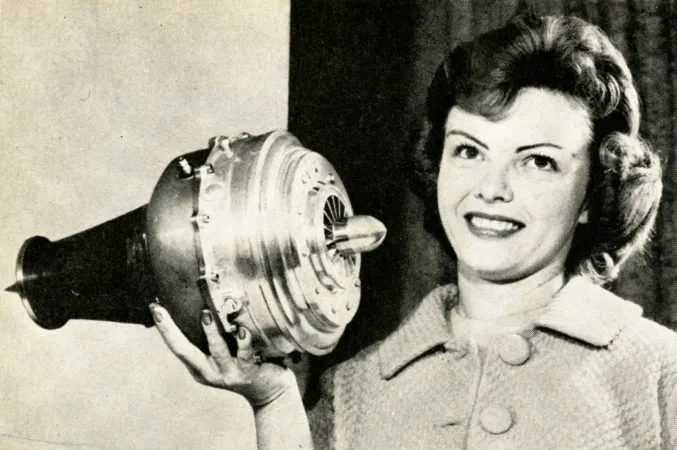


































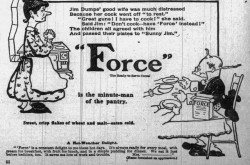
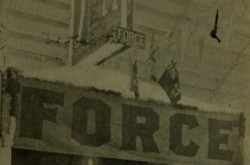
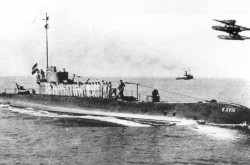
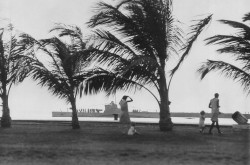
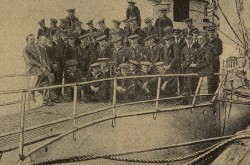
![A block of photographs showing some of the people involved in the bombing of beluga whales in the estuary and gulf of the St. Lawrence River. Anon., “La chasse aux marsouins [sic]. » Le Devoir, 15 August 1929, 6.](/sites/default/files/styles/thumbnail_7/public/2024-09/Le%20Devoir%2015%20aout%201929%20page%206.jpg?h=584f1d27&itok=TppdLItg)
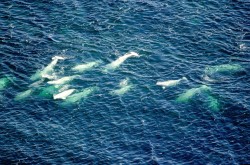
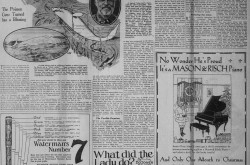

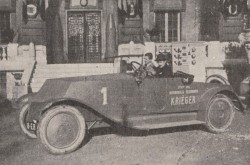
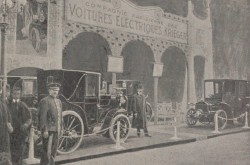
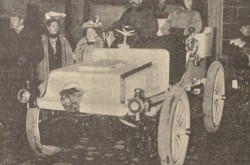
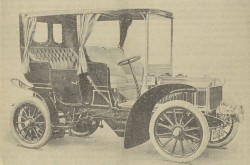

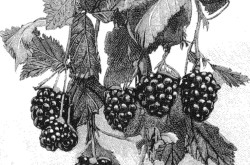
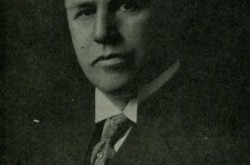
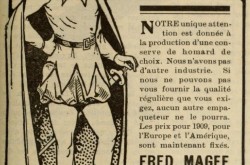
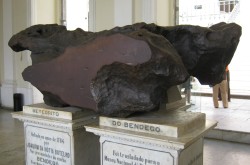
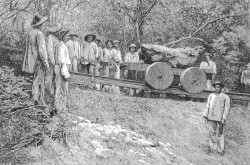
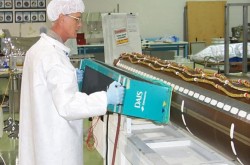

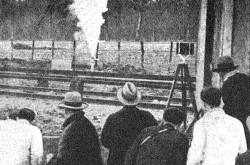
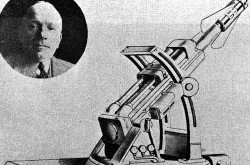
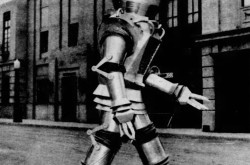

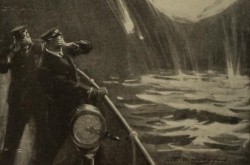
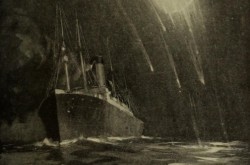
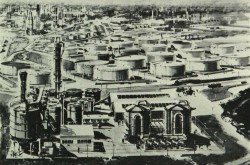

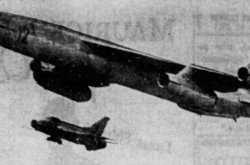
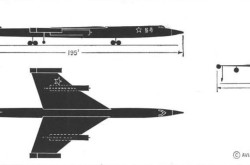
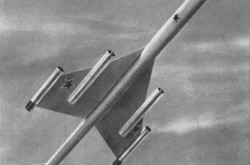
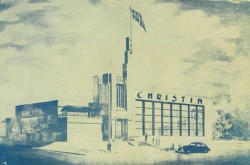
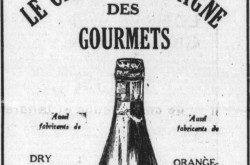
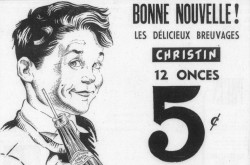
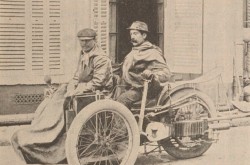
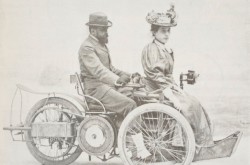
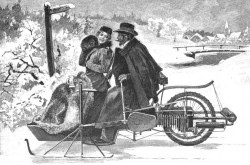
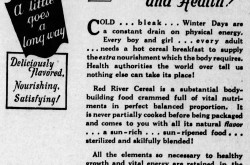

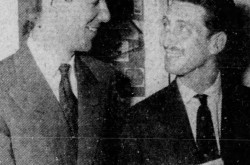
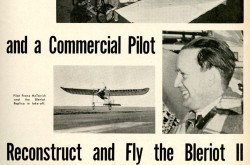
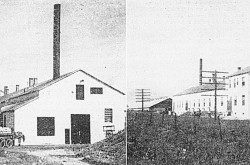
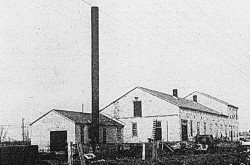



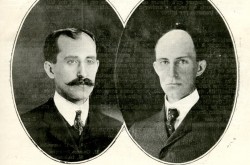

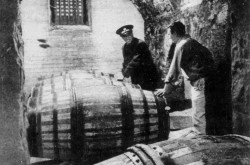
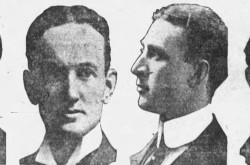
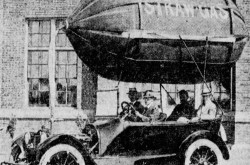
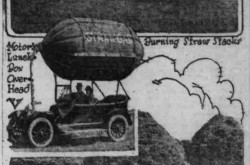
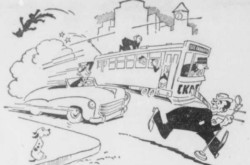

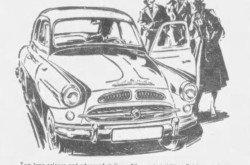
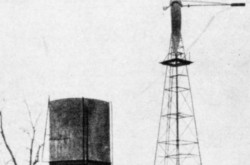
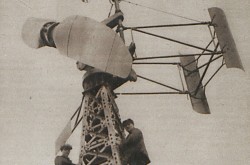
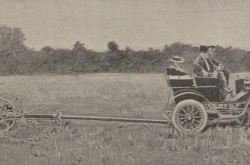

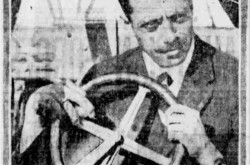
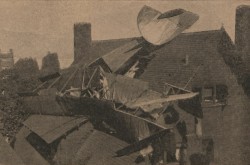
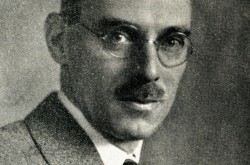
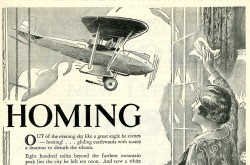
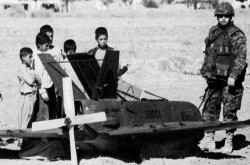
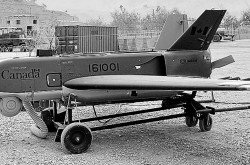
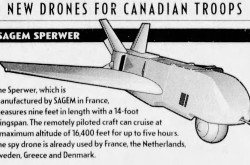
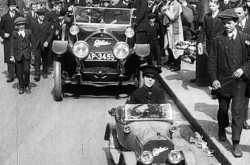
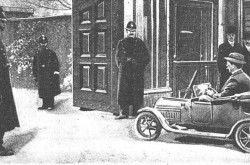
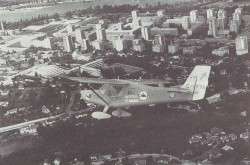
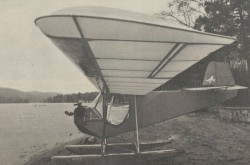

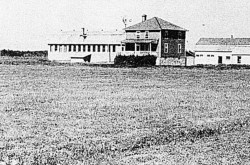
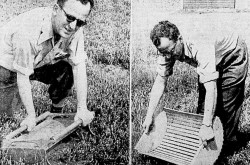
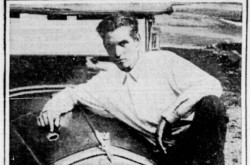
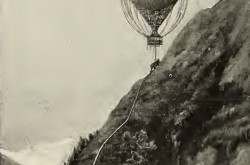
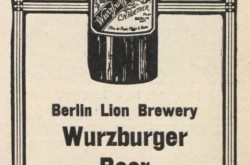

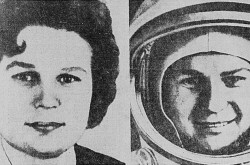
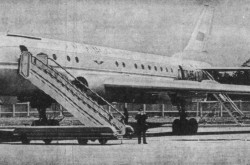
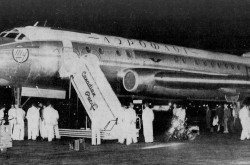
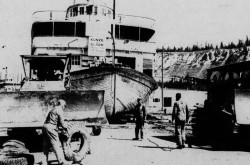
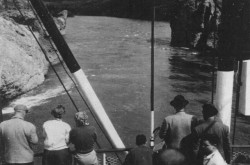
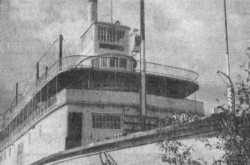
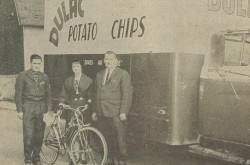
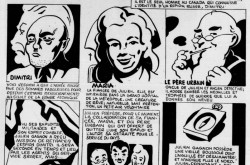
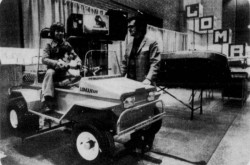
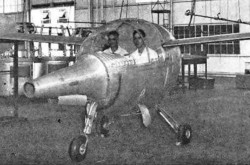
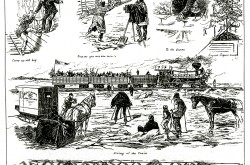
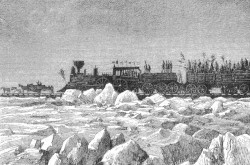
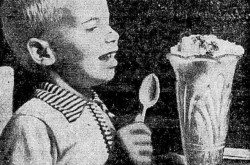
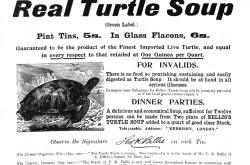
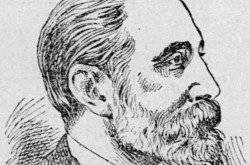
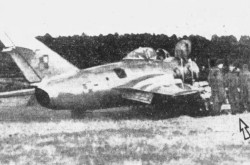
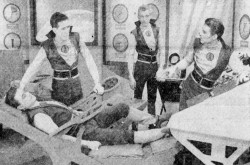
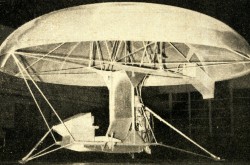
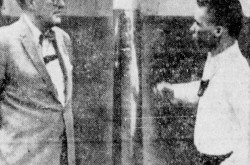
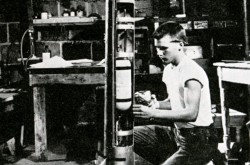
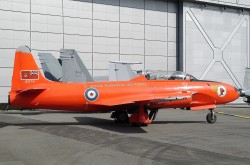
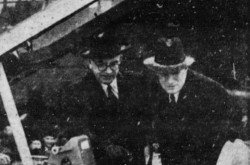
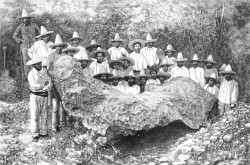
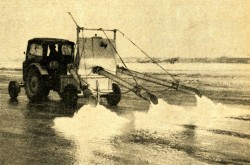
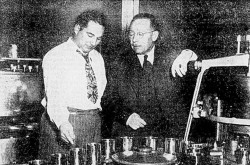
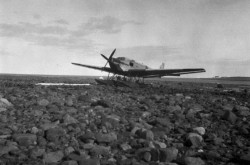
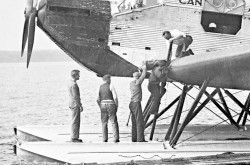
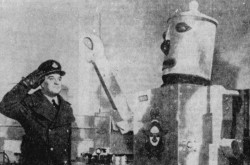
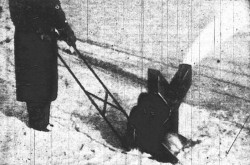
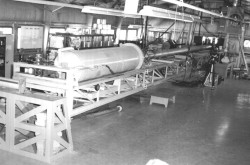
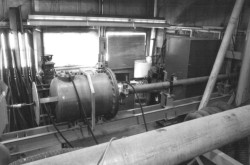
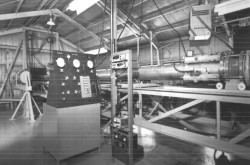
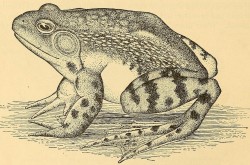
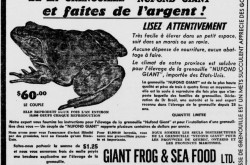
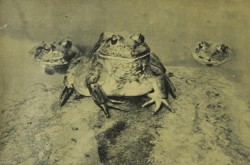
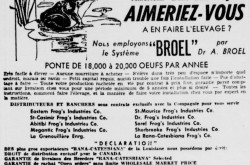
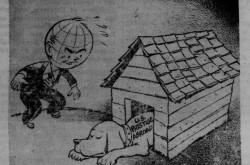
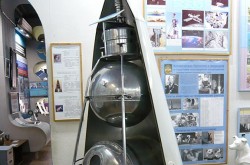
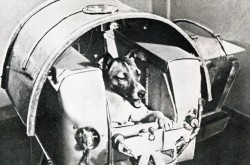
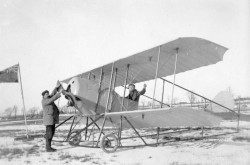
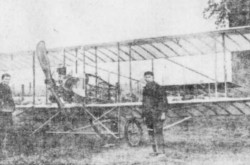
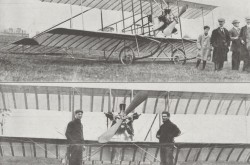
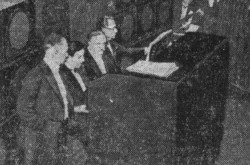
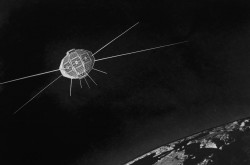
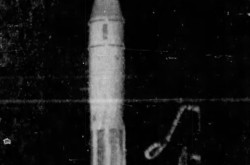
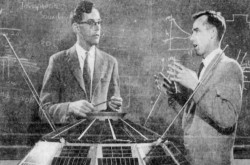
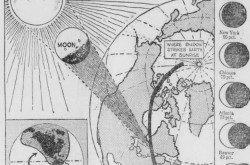



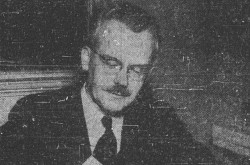
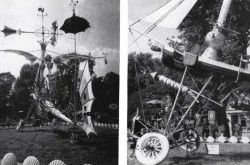
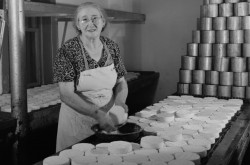
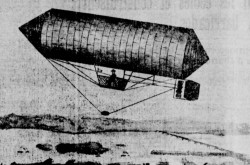
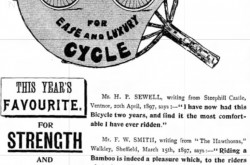
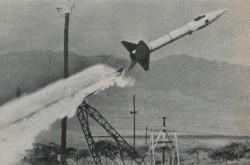
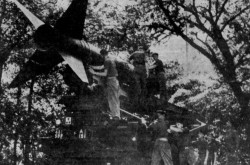
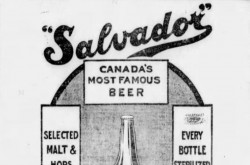

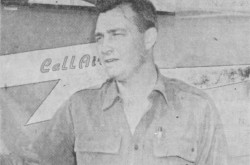
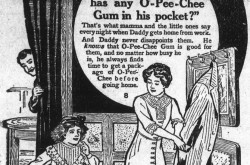
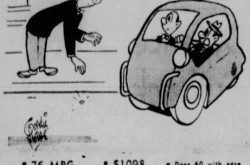
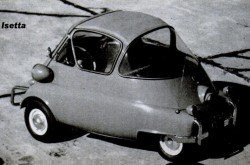
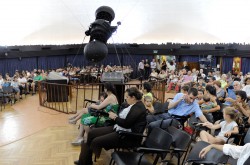
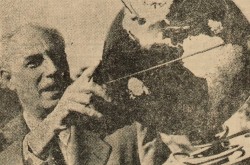
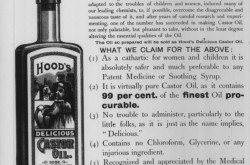
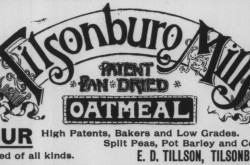
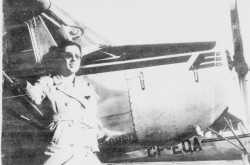
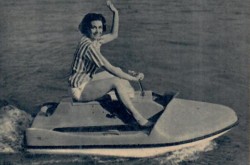

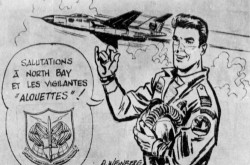
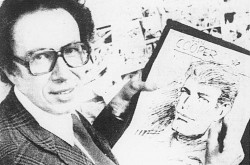
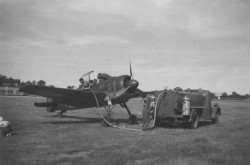

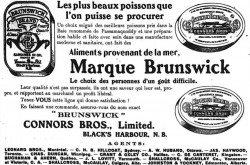


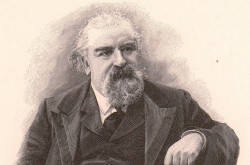
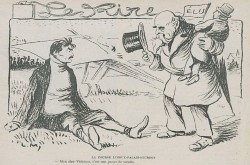
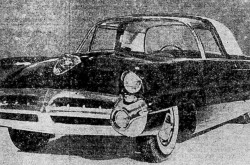
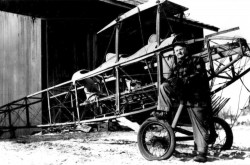
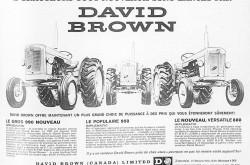
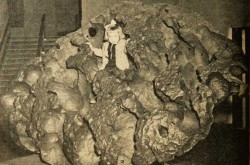
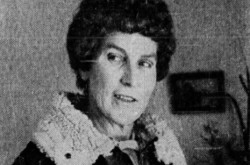
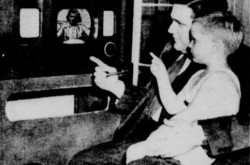
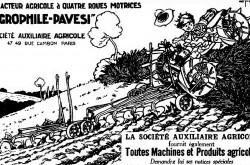
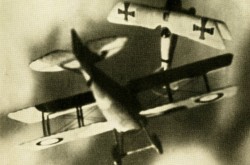
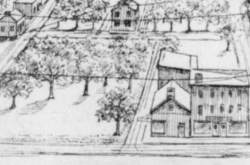
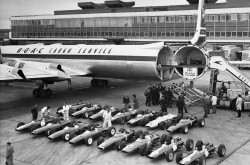
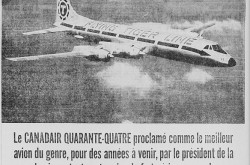
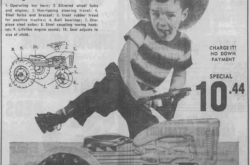
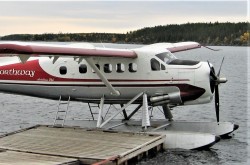
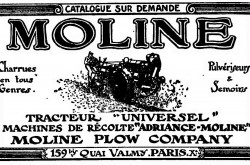
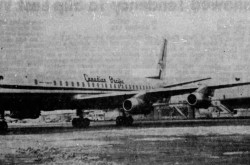
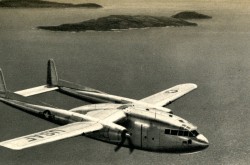
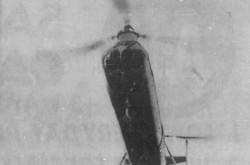

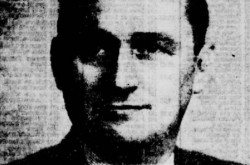
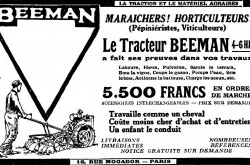
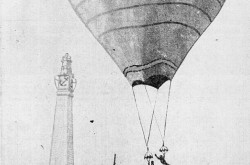

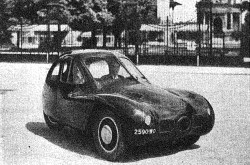
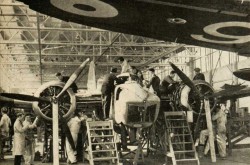
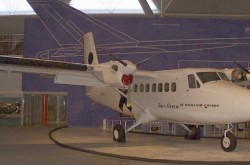
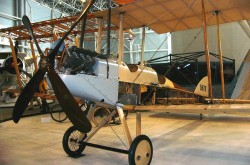
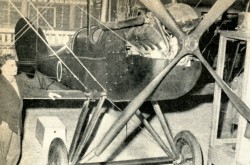

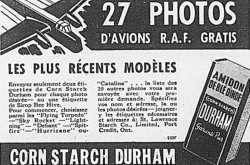

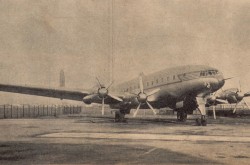
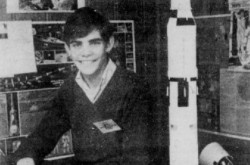
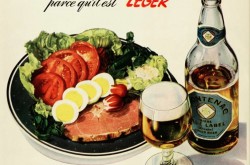
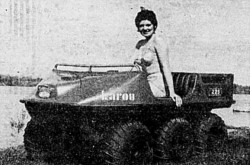
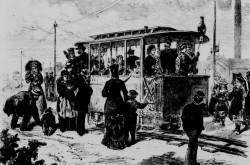
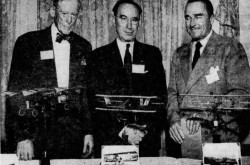
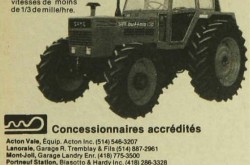
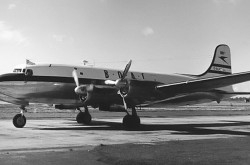
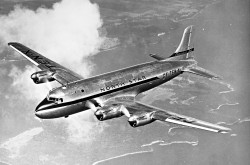
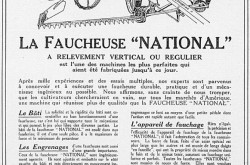
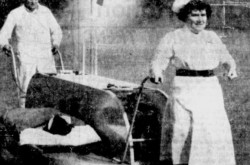
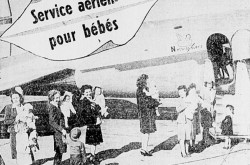
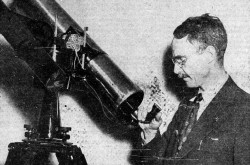
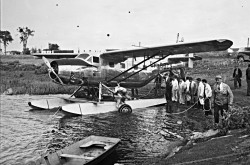
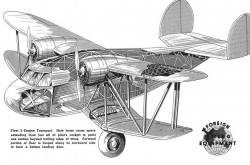
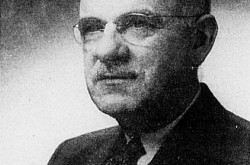
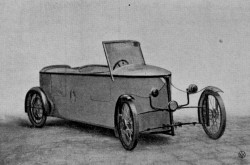
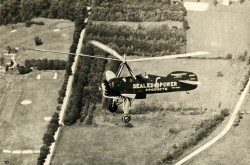
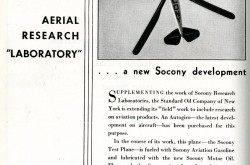
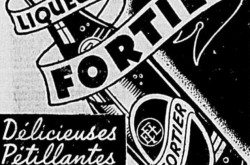
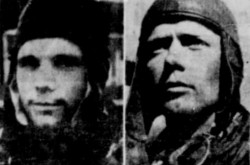
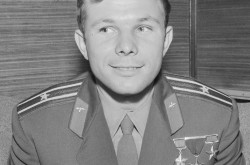
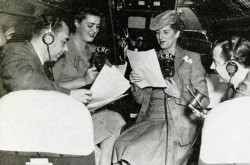
![Peter Müller at the controls [sic] of the Pedroplan, Berlin, Germany, March 1931. Anon., “Cologne contre Marseille – Le mystère du ‘Pédroplan.’ [sic]” Les Ailes, 2 April 1931, 14.](/sites/default/files/styles/thumbnail_7/public/2021-04/Les%20Ailes%202%20avril%201931%20version%20big.jpg?h=eafd0ed4&itok=WnBZ5gMf)
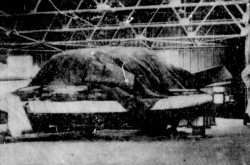
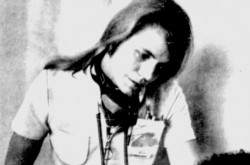
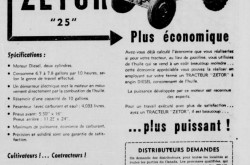
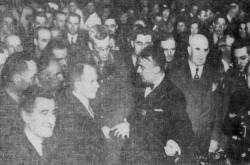
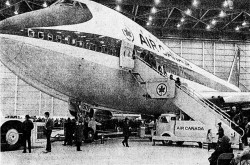
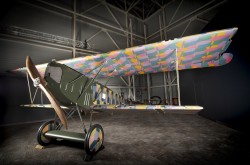
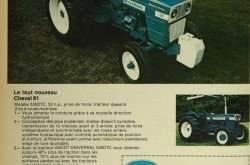
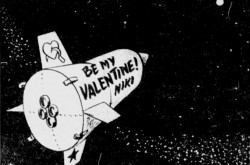
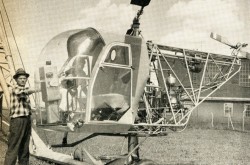

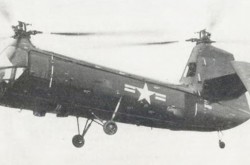
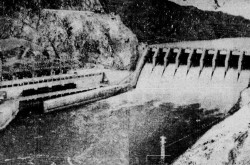
![One of the first de Havilland Canada Chipmunk imported to the United Kingdom. Anon., “De Havilland [Canada] DHC-1 ‘Chipmunk.’” Aviation Magazine, 1 January 1951, cover.](/sites/default/files/styles/thumbnail_7/public/2021-01/Aviation%20magazine%201er%20janvier%201951%20version%202.jpg?h=2f876e0f&itok=DM4JHe5C)
